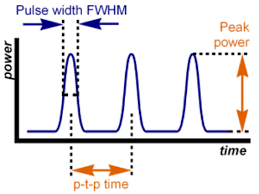The Value of Laser Pulse Systems in Treating Heart Disease
Heart disease remains a significant global health concern, with a diverse range of treatment approaches constantly under exploration. Among these approaches, laser pulse systems have emerged as a promising avenue for treating various heart conditions. This article delves into the principles underlying laser pulse systems' application in heart disease treatment and showcases specific case studies that highlight their value. From a search engine optimization perspective, it aims to provide a comprehensive overview that attracts readers and search engine algorithms alike.
The Principles of Laser Pulse Systems in Heart Disease Treatment:
Laser pulse systems employ precisely calibrated bursts of laser energy to target specific areas of the heart. This approach offers several advantages in treating heart disease:
- Minimally Invasive Precision: Laser pulses can be delivered with remarkable precision, allowing surgeons to focus on specific cardiac tissues without the need for open-heart surgery. This minimally invasive approach reduces patient trauma and enhances recovery.
- Synchronization with Heart Rhythms: Laser pulse systems are synchronized with the patient's electrocardiogram (ECG) signals, ensuring that laser energy is administered between the R and T waves of the heartbeat cycle. This timing minimizes interference with the heart's electrical activity, making it the ideal window for intervention.
- Stimulation of Healing: Laser energy, when applied to targeted heart tissues, can stimulate the regeneration of damaged cells and promote angiogenesis, the formation of new blood vessels. This accelerates the healing process and improves cardiac function.
Applications of Laser Pulse Systems in Heart Disease Treatment:
Let's explore some real-world applications of laser pulse systems in treating heart disease:
Case Study 1: Ischemic Heart Disease
Ischemic heart disease, often caused by atherosclerosis, leads to reduced blood flow to the heart. Laser pulse systems have been employed to clear obstructed coronary arteries. The laser's precise energy vaporizes plaque build-up, restoring blood flow and alleviating angina pectoris symptoms. Patients experience improved cardiac function and a reduced risk of heart attacks.
Case Study 2: Dilated Cardiomyopathy (DCM)
Dilated cardiomyopathy can result from various factors, including viral infections. In this case, laser pulse systems are used to create micro-injuries in the heart's ventricular tissue. These controlled injuries trigger the body's natural healing response, leading to the formation of healthier heart muscle tissue. As a result, DCM patients experience enhanced cardiac function and an improved quality of life.
Case Study 3: Transplantation Enhancement
Laser pulse systems play a crucial role in preparing the recipient's heart for transplantation. By optimizing the recipient's heart tissue and enhancing its regenerative capacity, the success rates of heart transplants significantly improve. This application showcases the versatility of laser pulse systems in different aspects of heart disease treatment.
Conclusion:
In conclusion, laser pulse systems offer a valuable approach to treating heart disease. Their ability to provide minimally invasive, precisely timed interventions, and stimulate healing processes makes them a promising tool in the cardiac surgeon's arsenal. As demonstrated by various case studies, laser pulse systems have yielded positive outcomes in addressing ischemic heart disease, dilated cardiomyopathy, and even heart transplantation preparation. The continued research and refinement of these systems hold great promise for the future of heart disease treatment.
Through this article, we've explored the principles and applications of laser pulse systems in heart disease treatment. By addressing these aspects comprehensively, we aim to provide valuable insights for both readers seeking information on cutting-edge medical treatments and search engines looking to provide authoritative resources on the subject.
